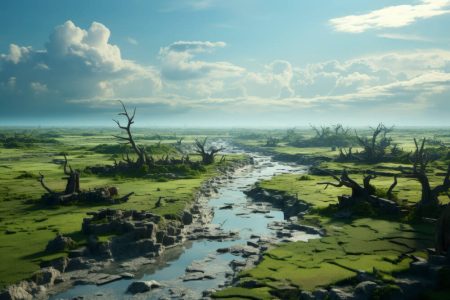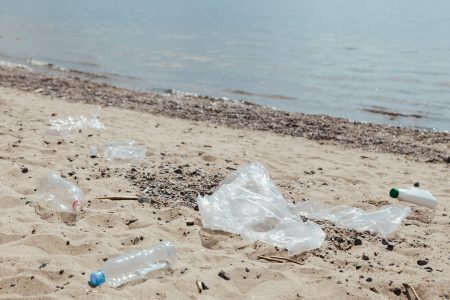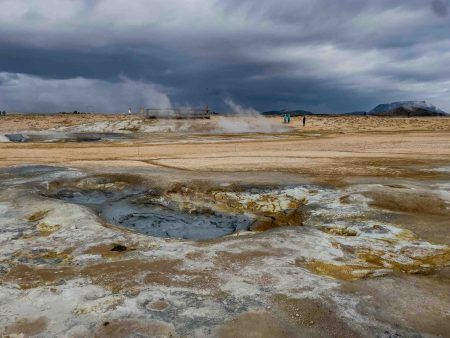
Climate change is a global phenomenon with far-reaching effects, but its impact on coastal ecosystems is particularly profound. These ecosystems, which include mangroves, coral reefs, estuaries, and salt marshes, are among the most productive and biodiverse environments on the planet. However, they are also some of the most vulnerable to the changing climate. Understanding the impact of climate change on coastal ecosystems is crucial for developing strategies to protect and preserve these vital areas.
Rising Sea Levels
One of the most significant impacts of climate change on coastal ecosystems is the rising sea level. As global temperatures increase, polar ice caps and glaciers melt, contributing to higher ocean levels. This phenomenon poses a direct threat to coastal habitats, leading to increased erosion, flooding, and the loss of habitat for numerous species.
In particular, wetlands and marshes are highly susceptible to rising sea levels. These areas provide critical breeding grounds for fish, birds, and other wildlife. When they are inundated with seawater, the delicate balance of salt and freshwater is disrupted, affecting the species that rely on these habitats. Additionally, saltwater intrusion into freshwater systems can compromise water quality, impacting both wildlife and human communities.
Ocean Acidification
Another significant impact of climate change on coastal ecosystems is ocean acidification. As the concentration of carbon dioxide (CO2) in the atmosphere increases, more CO2 is absorbed by the oceans. This process alters the chemical composition of seawater, making it more acidic. Ocean acidification has a particularly detrimental effect on coral reefs, which are already under stress from warming waters.
Coral reefs are vital to marine biodiversity, supporting about 25% of all marine species. Acidic waters weaken the calcium carbonate structures that corals build, leading to reduced growth rates and increased susceptibility to disease. This not only threatens the survival of coral reefs but also the myriad species that depend on them for food and shelter.
Changes in Temperature
Climate change also leads to higher sea surface temperatures, which can have devastating effects on coastal ecosystems. Warmer waters can cause coral bleaching, a phenomenon where corals expel the symbiotic algae that live in their tissues. Without these algae, corals lose their major source of food and their vibrant color, leading to mass die-offs if the stress conditions persist.
Higher temperatures also affect the distribution of marine species. Many species may migrate to cooler waters, disrupting existing ecosystems and leading to new competition for resources. For example, fish populations may shift, impacting the fishing industries that depend on them and the communities that rely on these industries for their livelihoods.
Extreme Weather Events
The frequency and intensity of extreme weather events, such as hurricanes and typhoons, are expected to increase with climate change. These events can cause significant damage to coastal ecosystems. Strong winds and storm surges can destroy habitats, erode shorelines, and lead to the loss of both plant and animal life.
Mangrove forests, which act as natural barriers against storm surges, can be severely damaged during extreme weather events. The loss of mangroves not only reduces coastal protection but also eliminates critical breeding grounds for many marine species. Additionally, the destruction of coastal infrastructure can result in pollution, further harming the environment.
Impact on Human Communities
The impact of climate change on coastal ecosystems extends to human communities as well. Many people depend on these ecosystems for their livelihoods, particularly in fisheries and tourism. As fish populations decline and coral reefs deteriorate, the economic stability of these communities is threatened.
Furthermore, the loss of natural coastal barriers, such as mangroves and coral reefs, increases the vulnerability of coastal areas to storm surges and flooding. This can lead to more frequent and severe property damage, displacement of communities, and loss of life. The cost of rebuilding and adapting to these changes places a significant financial burden on governments and individuals alike.
Conservation and Adaptation Strategies
To mitigate the impact of climate change on coastal ecosystems, a combination of conservation and adaptation strategies is necessary. Protecting and restoring these ecosystems can enhance their resilience to climate change. For instance, replanting mangroves and restoring coral reefs can provide natural defense mechanisms against rising sea levels and storm surges.
Additionally, reducing greenhouse gas emissions is crucial to slowing the rate of climate change and its effects. Transitioning to renewable energy sources, improving energy efficiency, and implementing policies that limit carbon emissions can help reduce the overall impact on coastal ecosystems.
Community involvement and education are also vital. By raising awareness about the importance of coastal ecosystems and the threats they face, individuals can be encouraged to support conservation efforts and adopt sustainable practices. Local communities can play a key role in monitoring and managing these ecosystems, ensuring their protection for future generations.
Conclusion
The impact of climate change on coastal ecosystems is multifaceted and severe, affecting not only the environment but also the human communities that depend on these ecosystems. Rising sea levels, ocean acidification, higher temperatures, and extreme weather events all pose significant threats. However, through concerted conservation and adaptation efforts, it is possible to mitigate these impacts and protect coastal ecosystems for the future. Addressing climate change is a global challenge, but with collective action, we can work towards a more sustainable and resilient world.



